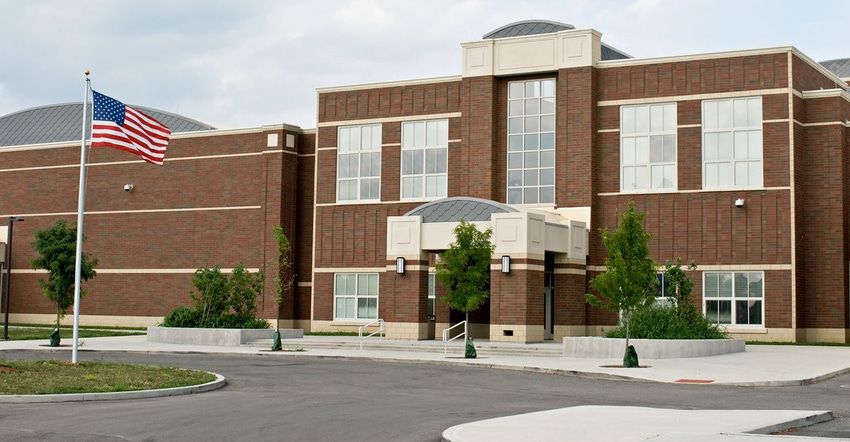
Without needed investment, the U.S. risks falling behind in agricultural research.
Close to $11.5 billion is needed for repairs and renovations at USDA-funded schools of agriculture and 69% of the buildings at these schools are more than 25 years old, according to a study from Gordian and the Association of Public and Land-grant Universities that examines buildings at schools and universities authorized to receive USDA NIFA funding. By constrast, only 7% of buildings have been constructed in the past 10 years.
This report comes on the heels of a study from the American Society of Civil Engineers that gives U.S. infrastructure a grade of C-. The ASCE study found 43% of the nation's roadways are in poor or mediocre condition, there's a water main break every two minutes and 53% of public school districts need to update or replace multiple building systems.
"The United States risks losing the ability to compete internationally if we ask our researchers and educators to conduct and deliver 21st century results in facilities from the 1950s and 1960s," said Doug Steele, vice president of food, agriculture and natural resources at the Association of Public and Land-grant Universities, in a media statement. "In order for these institutions to conduct cutting edge research in areas such as food safety and security they need cutting edge research facilities, not buildings with failing utility systems, leaky roofs, and outdated equipment."
The study shows the results of inaction, with the price tag rising $3.1 billion, or 37%, from the $8.4 billion in infrastructure and deferred maintenance needs identified in a 2015 study. The two studies – from 2015 and 2020 - have collected data on 16,000 buildings across 97 institutions. The report found structural deficiencies including leaky roofs and outdated air circulation and HVAC systems.
"These pre-existing infrastructure shortfalls will only be exacerbated by the need for enhanced air circulation to limit spread of COVID-19," Douglas Steele, APLU vice president of food, agriculture and natural resources, wrote in the report.
"This report makes one thing clear: the problem will not go away unless we act and recommit to agricultural and food innovation," he said.
Strategic federal investment in agricultural facilities would create 200,000 new jobs worldwide, according to Gordian, a leader in facility and construction cost data, software and services for all phases of the building lifecycle.
Why invest?
Every year, land-grant universities graduate more than 36,000 students in food, agricultural and natural resource disciplines. In 2019, agriculture and related industries contributed more than $1.09 trillion to the U.S. GDP, 5.2% of the total. In addition, the agricultural industry generates 22 million jobs, or about 11% of U.S. employment.
"Cutting-edge research requires state-of-the-art facilities," said Jeff Lieberson, APLU senior vice president for public affairs. "In many cases, enrollment in classes has increased – people are seeing more opportunities for education and training, they want to bounce back post-pandemic. Modern facilities promote STEM skill development, while also providing interactive and collaborative environments in which non-technical skills can be learned. Our vision includes integrating advanced technologies, observational and collaborative research capabilities, and multi-functional research and teaching facilities through federal-state and public-private partnerships. It's also critical to continue to promote the science-based agricultural entrepreneurship that supports U.S. food innovation. These research activities are not something that can just be done from home."
International research from the Organisation for Economic Co-operation and Development indicates that agricultural research investments result in $10-$20 in benefits for every $1 spent on research depending on the nature of the applied research.
"Modern agricultural research and education facilities serve as the backbone of cutting-edge research and applied science solutions that address climate change, agricultural profitability, food safety, zoonotic disease preparedness, personalized nutrition, biosecurity, new biobased packaging and energy innovations, and advanced market analysis," Lieberson said. "These investments are critical to ensuring that U.S. agriculture and food innovation are maintained as the foundation of U.S. global strategic advantage and national security."
Read more about:
ResearchAbout the Author(s)
You May Also Like




